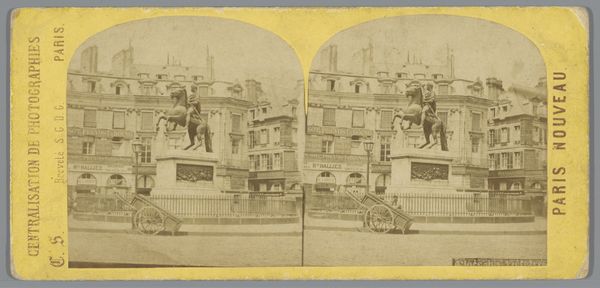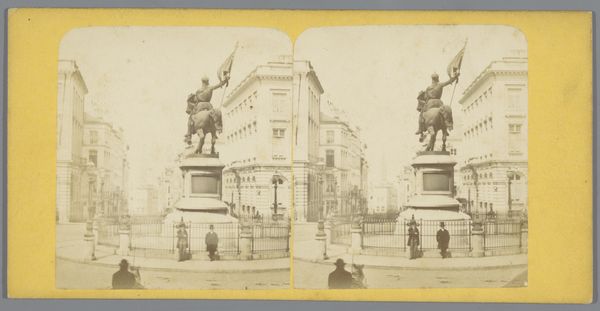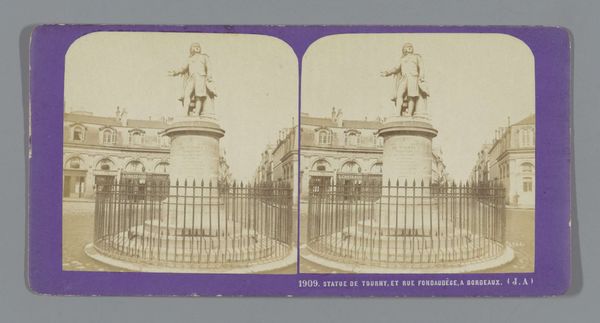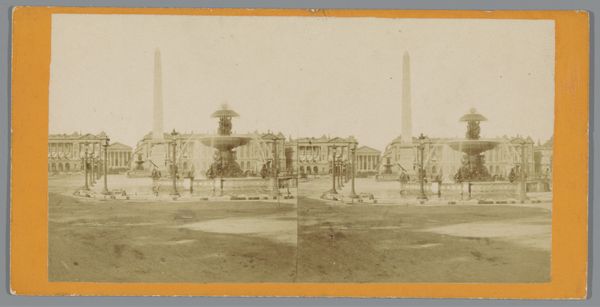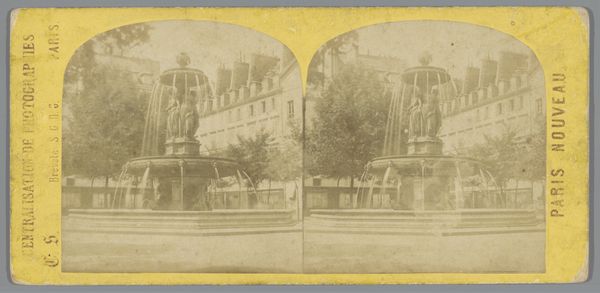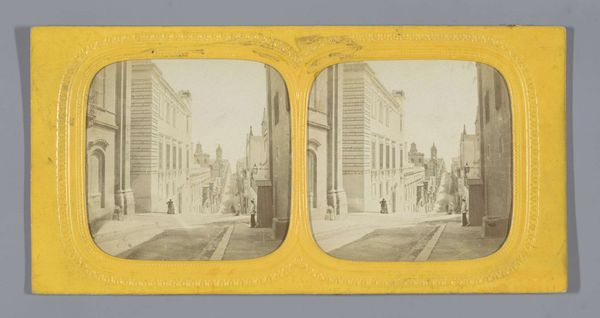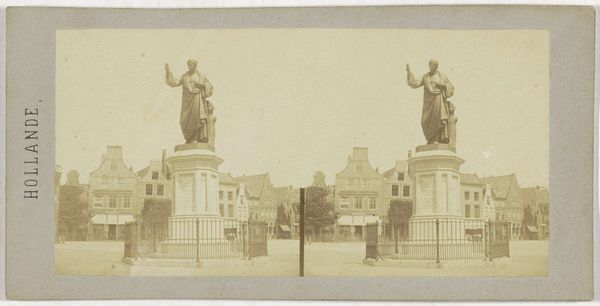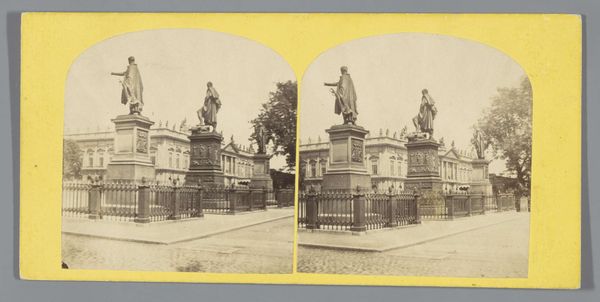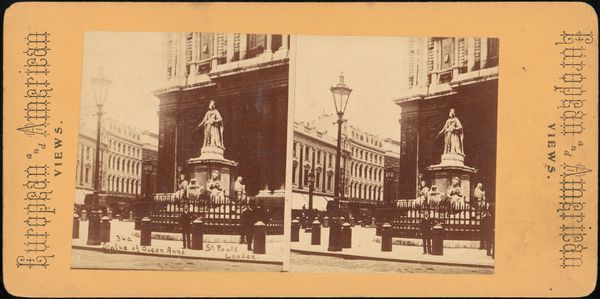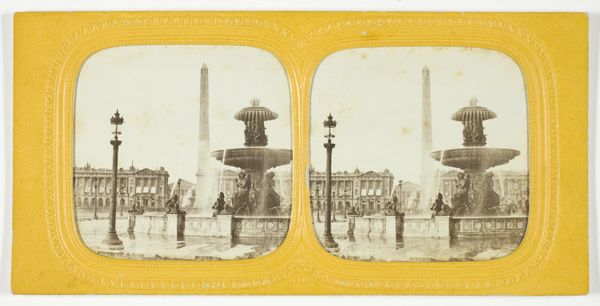
Gezicht op het standbeeld van Laurens Janszoon Coster op de Grote Markt in Haarlem c. 1860 - 1875
0:00
0:00
daguerreotype, photography
#
portrait
#
landscape
#
daguerreotype
#
photography
#
cityscape
#
realism
Dimensions: height 85 mm, width 175 mm
Copyright: Rijks Museum: Open Domain
Editor: Here we have an unusual daguerreotype from around 1860-1875 by Ernest Eléonor Pierre Lamy. It’s titled "Gezicht op het standbeeld van Laurens Janszoon Coster op de Grote Markt in Haarlem"—or, a view of the statue of Laurens Janszoon Coster in the main square of Haarlem. The subdued tones and the subject matter create such a calm, almost frozen atmosphere. What captures your imagination most about this early photograph? Curator: Frozen is a good way to put it! To me, it's the layering of time that speaks volumes. Think about it: we’re seeing a photographic snapshot of a statue commemorating a figure from centuries earlier, Laurens Janszoon Coster, who many believe invented printing. So the daguerreotype itself, a fairly new invention at the time, immortalizes an older artistic medium while paying tribute to the godfather of the *written* word! The city square behind it, now certainly different from the way Lamy saw it. How does this layering play with you? Editor: It’s interesting to think of how new and groundbreaking photography must have seemed back then, recording reality in such detail. But I'm also thinking about Coster’s claim to be the inventor of printing…isn't that contested? Curator: Absolutely! Gutenberg usually gets the credit. So we're already questioning the narrative *within* the photograph. This Coster statue isn't just a likeness; it represents a fiercely debated idea of national pride and the origins of knowledge! Does that make it any less "real" in Lamy's portrait of it? Editor: That tension definitely makes it more compelling. Seeing it not just as a historical record, but as a statement, changes everything. Curator: Precisely. Early photography wasn’t just about documentation. It was also about shaping stories – even those set in stone! I find it beautiful to reflect how an image’s essence is how it tells its tale.
Comments
No comments
Be the first to comment and join the conversation on the ultimate creative platform.
